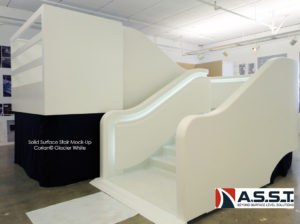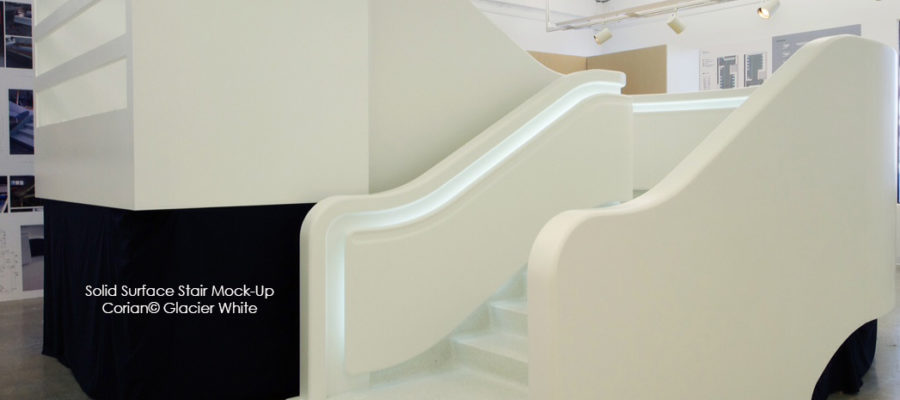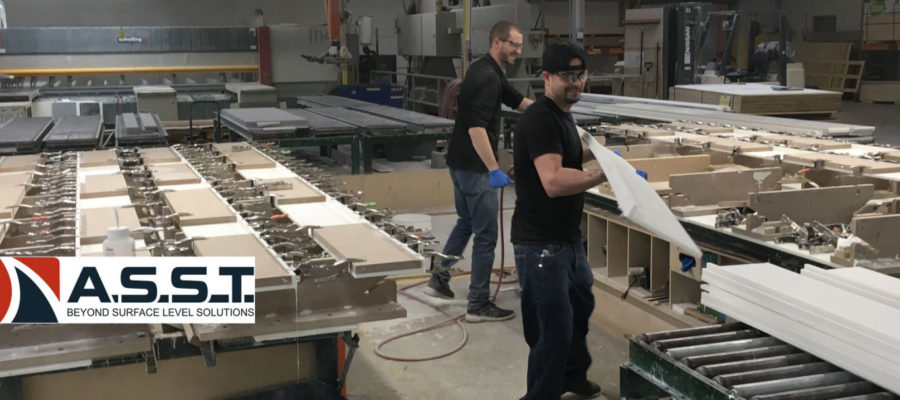 Specifying solid surface in today’s commercial construction doesn’t have to be difficult. Many architects/designers will rely on products they have used in the past. These specifiers are the conservative group and usually have been in their career for many years. More and more of today’s architects/designers are willing to use new products, green products and even experimental products. Both groups are now starting to understand that solid surface can be used for much more than just countertops. Solid surface is being used for everything from staircases/hand railings to outdoor seating. It doesn’t matter which group specifiers are in, they are all worried about one thing: price.
Specifying solid surface in today’s commercial construction doesn’t have to be difficult. Many architects/designers will rely on products they have used in the past. These specifiers are the conservative group and usually have been in their career for many years. More and more of today’s architects/designers are willing to use new products, green products and even experimental products. Both groups are now starting to understand that solid surface can be used for much more than just countertops. Solid surface is being used for everything from staircases/hand railings to outdoor seating. It doesn’t matter which group specifiers are in, they are all worried about one thing: price.
Problems can cost time and material. There are many problems that you can run into if you have never specified a solid surface color, pattern, shape, size or material. Problems that you may run into with patterns are seaming. Solid surfaces come in sheets. If the dimensions of your project are larger than the sheet, you will have a seam. If there is a pattern in the solid surface you have specified, there is a good chance you will see the seam. Solid colors in solid surface typically show no seam. A problem that you may encounter with shape is knowing which fabricator has the experience to thermoform and CNC the desired shapes for your project. Problems that you may experience with different types of solid surface materials are the restraints of the chemical makeup. Acrylics are great for back-lighted projects and are bad if it is extruded and has to be joined. No specifier wants to take on a project where the design calls for an eyesore of a seam which will be the first thing noticed. No specifier would want to take on a project where the size and dimensions have weight that cannot be managed.
At ASST we have 20 years of experience working with solid surfaces. We know just how tight a radius can be with different materials. We know how to hide the seam of a patterned material. We know that the weight for materials made of acrylic polymer and alumina trihydrate is approximately 4.5 pounds per square foot at ½” thickness (yes, that is important). At ASST, we know how to be specific with solid surface and we can help specify projects.
If you want to be specific about your next solid surface project, let ASST help you with your specifications. Whatever you need, ASST can build it to your exact specifications, in a safe manner, and to the quality standards you expect. Contact us now online or call us at 717-630-1251.




